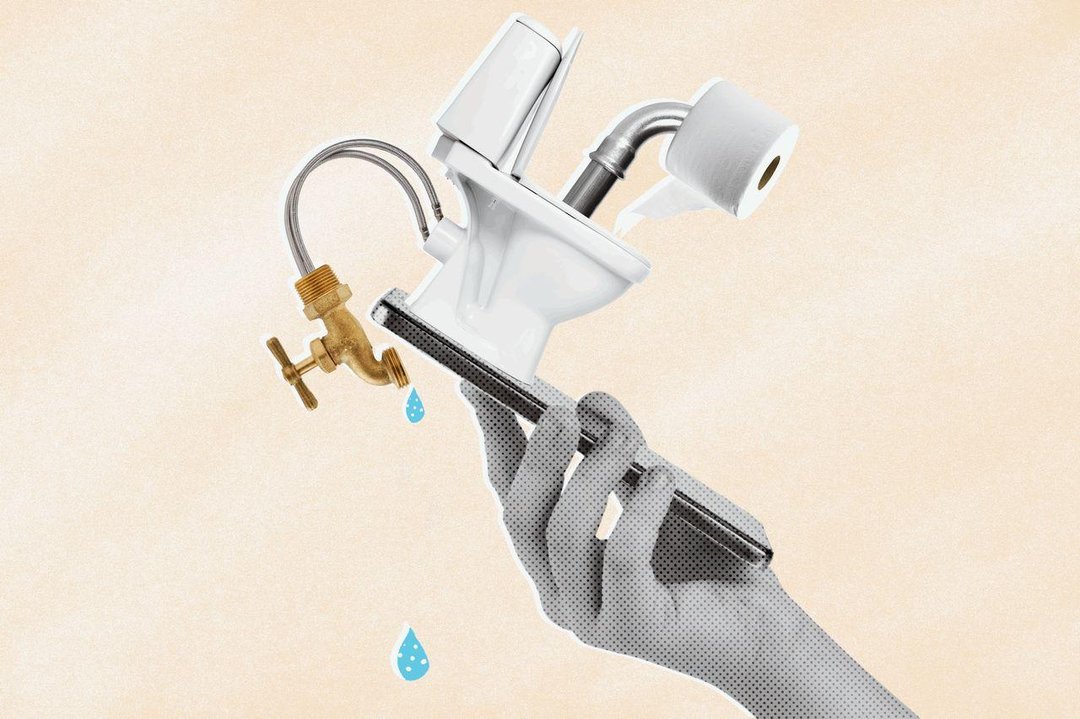
By Te-Ping Chen
June 25, 2024
Every now and then, Allyson Saling will be helping a client install a ceiling fan, when she finds herself falling to the ground.
That would be a hazard for most electricians, but not Saling, who shows up to work via video calls. When homeowners knock their phone off a ladder, Saling, in Texarkana, Texas, just waits for them to pick it up so she can walk them through what to do next.
“It’s like, whoops, you dropped me,” she says.

Illustration: Cam Pollack/WSJ, iStock (6)
The cost of home-repair service visits has risen in recent years, just as more Americans have grown accustomed to video calls. Enter virtual plumbers and electricians: a small but growing crop of tradespeople offering their services to those interested in DIY fixes at cheaper rates. It’s a new take on an old craft—one with perks, including less physical strain—as well as some of the same Zoom hiccups familiar to any white-collar worker.
A technician for home-maintenance company Frontdoor, Saling enjoys the work-life balance afforded by the remote role, especially living in a rural area with a young son and five cats and dogs. She previously endured a 90-minute commute to her electrician job at the Dallas-Fort Worth airport.
Customers occasionally dial in with complex tasks: Saling once helped someone install a service panel for a Jacuzzi over nine calls, including a run to Lowe’s, where she helped him pick out parts. Frontdoor, which started offering virtual visits last spring and charges a $25 flat annual fee, says its employees work to ensure safety, including by making sure power is off during jobs.
Many are simpler. In Weatherford, Texas, Shane Stuart, a virtual appliance repairman with VideoChataPro.com, recently helped a woman get her washing-machine door open after she couldn’t find the release knob.
“I’ve had plenty of calls when something wasn’t plugged in or the water wasn’t even turned on,” says Stuart, who does virtual visits for $3 a minute, cheaper than the $100 he’d charge in person.
Jason Bauder, of Twin Lake, Mich., who launched VideoChataPro.com in 2022, says typical calls last less than 15 minutes, though some run over two hours. As a plumber, he advises customers against trying to change piping themselves or jackhammering their flooring.
Given the abundant YouTube tutorials out there, though, “it’s hard to draw a line on what a customer can and can’t do,” he says.
Most technicians offering video chats have spent years honing skills. Going virtual requires a new one: cheering on nervous, inexperienced customers.
“They almost seem like they’re trying to defuse a bomb,” says electrician Robin Kruskol, in Escondido, Calif., adding that he works to explain every step and lavishes praise.
Kruskol offers video services part-time on top of his usual work. Demand hasn’t reached full-time levels yet, though he says it would be nice. Meanwhile, he’s enjoying catching unexpected glimpses of the world through calls, including having customers in India seek help hooking up a refrigerator or installing ceiling fans. He’s gotten calls from Europe too.
Tech worker Clay Erbes, who’s used VideoChataPro.com, says the idea of connecting with an electrician via video initially felt strange. But when he had questions about his home’s wiring that didn’t seem to warrant an expensive in-person visit, he figured it was worth a try.
“My attitude was, worst-case scenario, I lose like $10,” says Erbes, who lives in northwest Montana and has done DIY home-maintenance. The electrician, he says, was able to look at his outlet configuration and provide the information he wanted.
In Palm Springs, Calif., Brian Jackson, who specializes in HVAC repair, likes being able to take calls from anywhere. He recently attended his son’s kindergarten graduation and was milling around with other parents when someone called needing help with a thermostat. Still wearing festive leis and holding his son’s awards, he helped the customer change the batteries.
One challenge of virtual work is it tends to attract clients who consider themselves handy or are contractors themselves, Jackson says. Some get defensive or resist instruction. “I’m like, ‘You called me. I didn’t call you,’” he adds. He recalls one customer who refused to believe an air-conditioning unit’s compressor was faulty. “‘Let’s check your ego, or we can end this call,’” he told him after a few minutes of arguing.
Julie Foxx was laid off from her sales job last year and has been using the time to fix up her Cherry Hill, N.J., house. She recently wanted to replace four light sconces—“from the ’50s, but not the fun, cool 1950s”—and a timer. When an electrician came, he quoted $2,000 for the job. She wound up using Frontdoor.
“I was terrified of touching anything electrical, but with somebody watching over me I had more confidence tackling it,” she says. Though the projects proved more complicated than expected—one prior homeowner had done the wiring, with unusual configurations—she conquered them with a technician’s help.
“We had a good time making fun of the guy who’d installed it,” she says.
Sometimes over-the-phone tutorials fall short of a live person. For about 40% of cases, when jobs are too complicated, Frontdoor refers users to a contractor.
Michael Bickimer, who owns an electrician business in Overland Park, Kan., says virtual work requires a good poker face and the diplomacy of a marriage counselor. He’ll sometimes encounter couples working to troubleshoot an issue, one operating the basement breaker while the other flips switches upstairs, screaming at top volume.
“They’ll be like, Debra, turn off the damn breaker!” he says. “I try not to comment, but I’m laughing internally.”
Some clients can’t afford a full electrician visit, and he likes being able to help, and especially postpandemic, sees more Americans gaining confidence doing DIY projects.
“Everybody’s getting a little more brave.”
Write to Te-Ping Chen at Te-ping.Chen@wsj.com
Dow Jones & Company, Inc.



